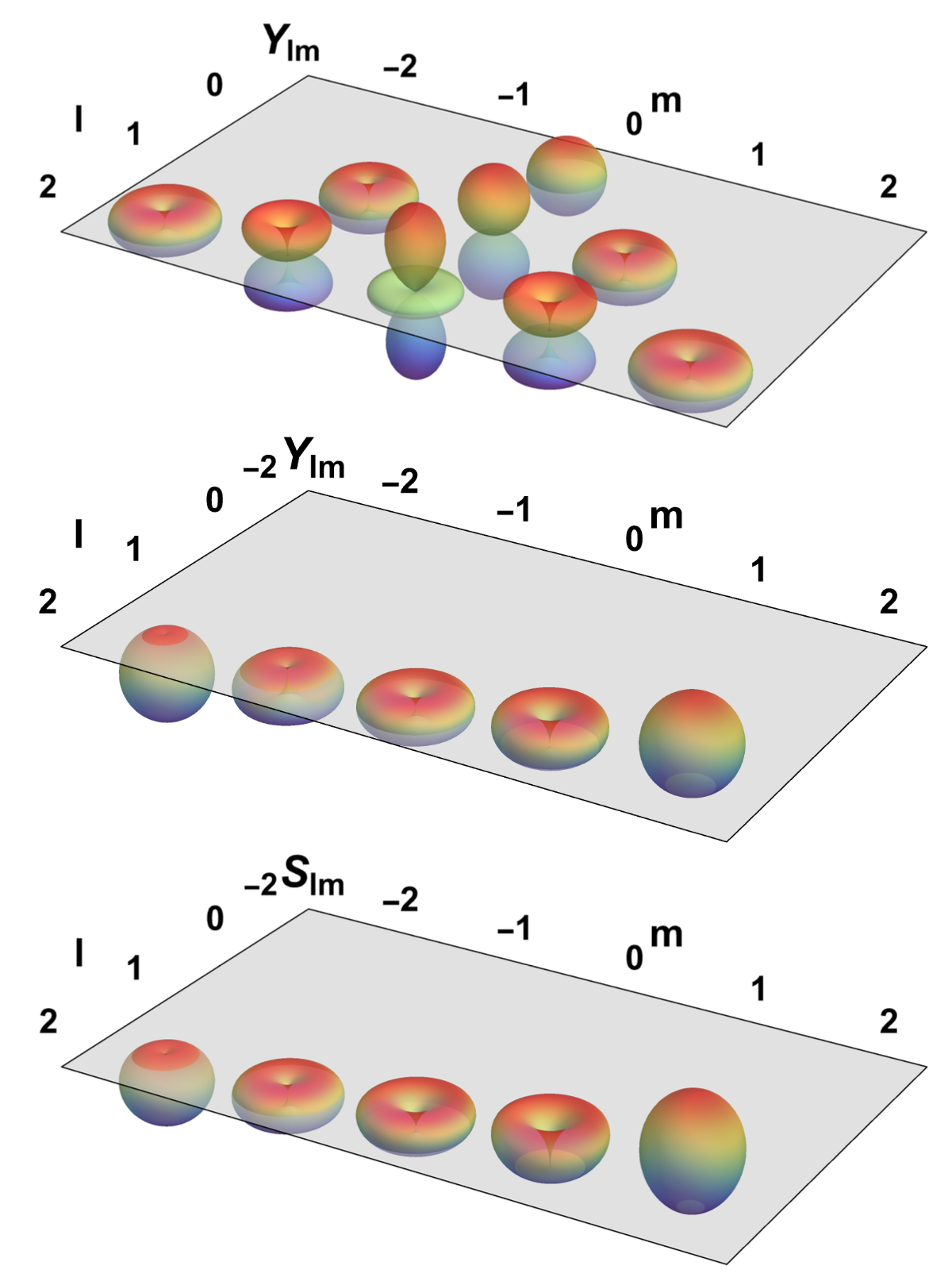Visualizing Spin-Weighted Spherical Harmonics
A quick visual tour of spin-weighted spherical and spheroidal harmonics in GR, using the BHPT toolkit.
I have often wondered how the various spherical harmonic bases look in GR. In undergraduate classes you typically learn about the scalar spherical harmonics $Y_{\ell m}(\phi,\theta)$. The gravitational waves are typically described with the spin weighted spherical harmonics $Y_{\ell m}^{-2}(\phi,\theta)$. For example the complex time domain strain is
\[h = h_+ - i h_\times = \sum_{\ell m} Y_{\ell m}^{-2}(\phi,\theta) h_{\ell m}\]Finally, the spin-weighted spheroidal harmonics are the functions which are the eigenfunctions of the angular sector of the Teukolsky equation. These explicitly depend on $\omega$.
\[S_{\ell m}^{-2}(\phi,\theta,\omega)\]I find both the spin-weighted spherical/spheroidal harmonics buy using the black hole perturbation theory toolkit’s package SpinWeightedSpheroidalHarmonics.
Below, I make an image which shows how each of them look. I did this for spherocity parameter $\gamma = \omega \chi \sim 0.7$. You can see that the spheroidal harmonics have preferential radiation in the upward direction comparing $m=-2$ vs $m=2$. This is because the retrograde mode is weaker, and has a different QNM frequency than the prograde one (slower frequency and similar damping rate).

A quick visual tour of spin-weighted spherical and spheroidal harmonics in GR, using the BHPT toolkit.
A simple Mathematica extension to automate conversions between SI and natural units like geometric, natural, and Planck systems.
I gave a presentation to a conference organized at Sigma Pi Sigma at University of Virginia.
I gave an hour long presentation to the gravity research group at University of Virginia. It specializes on content from my upcoming paper.
I gave a five minute presentation to Society of Physics Students about my research. This was to encourage first year students to get involved in research.
I had the pleasure of presenting my research to a group of first year students who are interested in scientific research. I gave an introduction to my resear...
Here is my upcoming paper describing tests of general relativity using black hole-pulsar binaries if one is found with next generation telescopes.
I spent the 2017 summer working with Marie Kasprazack, Arnaud Pele, and Adam Mullavey at LIGO Livingston through the Caltech SURF Program. I examined nonline...
I presented the results of my research at LIGO from the summer of 2017 at Caltech for the SURF final presentation.
I made this website on 10/21/2018 (though I have retroactively added some materials). I look forward to adding to it in the future!